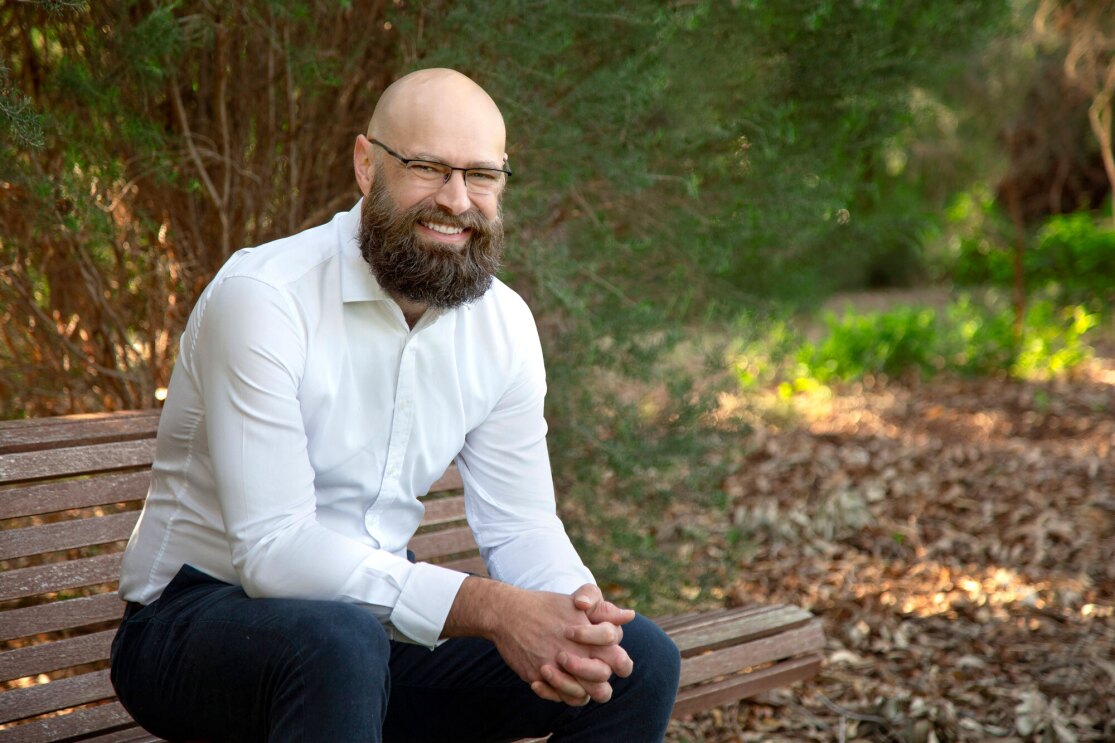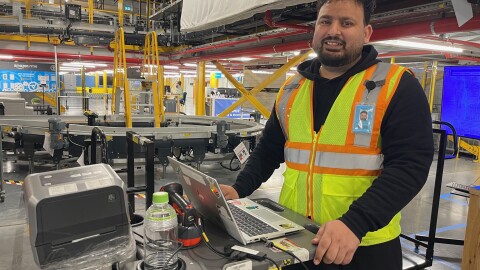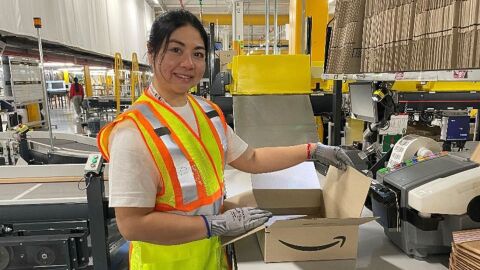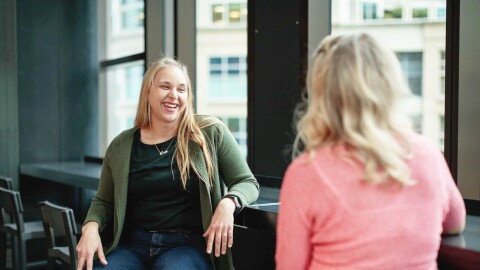Australia is a land with a long and rich history, but that requires us to recognise the realities of all 60,000 years of the history of people on this continent — not just the last 250.
In acknowledgement of the history of this Country, and of all the nations of people that it encompasses, Amazon Australia is committing to a meaningful reconciliation for First Australians through the delivery of its first Reconciliation Action Plan.
The plan — which is the first of four types outlined by Reconciliation Australia — aims to set the groundwork for more advanced steps in the future.
Forming foundations built upon shared values
Amazon Australia isn’t the first organisation to outline a Reconciliation Action Plan (RAP), but as an employer of more than 3,500 people in Australia and with locations across the country, this commitment sets forth a series of deliverables with the potential for impactful outcomes.
“Is reconciliation a corporate duty? Of course it is!” says Amazon Australia’s RAP Chairman, Partner Solution Architect, and Indigenous Australian, Mike Hill. “But it’s backed by a personal duty to acknowledge colonialism and the problems it caused for generations of First Australians.
“It’s about waking up to that and recognising the individuals that have carried their history forward to today. And by taking these first steps, we can create a foundation for a relationship to form between Indigenous and non-Indigenous Australians around the shared ideals we have regarding inclusion and equity in all aspects of life.”
This vision is built upon Amazon’s existing culture of inclusivity and long-term commitment to diversity.
Amazon currently employs more than 1.3 million people in offices and warehouses all over the globe. This huge network means it is home to people of diverse ethnic, ability, gender, and LGBTQIA+ backgrounds. And Amazon’s commitment to diversity doesn’t stop once the hiring process is complete — the company is home to various affinity groups that aim to help employees from diverse backgrounds feel included from day one.
“At Amazon Australia, we’re also dedicated to looking for ways to scale our positive impact as we grow, which is exactly what our work with Reconciliation Australia aims to do,” Mike says, proudly.
“Building a workforce where employees from all walks of life are supported and included is one of Amazon’s biggest priorities.”

Reconciliation starts with reflection
Reconciliation Australia’s RAP Framework offers organisations like Amazon Australia a structured approach to advancing reconciliation, with four main types of RAP corresponding to where that organisation is at in the journey: Reflect, Innovate, Stretch and Elevate.
“As an Indigenous Australian and tech leader at Amazon Australia, I’m very proud to be announcing our reflect RAP,” says Mike.
In particular, this Reconciliation Action Plan includes a number of commitments to increasing awareness of Indigenous culture and practices, as well as promoting education and opportunities for Indigenous customers, employees and partners of Amazon Australia.
“We want to begin fostering relationships with local organisations and groups of people who are working to conserve knowledge of the culture and land, and we will do that from a place of respect,” he continues.
“In some cases, that may be as simple as asking our employees to find out a little about the Indigenous culture of the land in which they work and reside.
“We’ll also encourage senior leaders to observe dates and practices that are important to the Indigenous people of their area.”
On top of these initial actions, Amazon Australia is also inviting Reconciliation Australia to review its progress along the way, before recommending new RAPs in future.
“At Amazon Australia, we want to be accountable in living up to our core values of diversity and inclusion,” says Mike. “So setting some clear benchmarks in how we communicate and propagate this RAP is essential.”
You can’t be what you can’t see
Just as Amazon Australia’s visibility makes the significance of this Reconciliation Action Plan all the more important, championing Aboriginal and Torres Strait Islander peoples in business also has positive impacts.
“You can’t be what you can’t see,” says Mike, speaking to his desire to inspire the next generation of Indigenous professionals.
“When I started out, there weren’t any other Indigenous people in conspicuous positions in the tech industry,” he recalls. “I think I could have benefitted a lot from having those kinds of role models.
“What we want to do through this RAP is to offer more opportunities. Not to offer a hand up, or a hand out, but rather ‘walk together’ for mutual benefit.”
It doesn’t stop at Amazon Australia’s relationship with its employees, either. In fact, Mike is a huge advocate for the products and services that companies such as Amazon Australia provide, and how they can be utilised by organisations to advance reconciliation.
In Mike’s case, that means helping to design and deliver solutions to non-government groups, charities and health organisations that are working to uplift Indigenous and remote communities.
“But it can also include our sellers, too,” he explains. “Amazon Australia offers fantastic opportunity for Aboriginal and Torres Strait Islander artists and creators to share their creativity, and we want to help shine a light on those relationships wherever possible.”
A promise in paint
To celebrate the inaugural RAP, Amazon Australia commissioned Kalkadoon woman and Aboriginal artist Chern’ee Sutton to create an artwork to commemorate their commitment.
Designed to be an expression of community, with the most prominent symbol representing Amazon Australia in the middle, surrounded by a symbol featuring four handprints (Amazon’s values of trust, connection and being informed) and a symbol that includes a kangaroo and emu motif (representing our journey towards reconciliation, which can only ever move forward), the piece is symbolic of a more inclusive tomorrow.
“These pillars make up Amazon Australia, their Reconciliation Action Plan and their journey towards Reconciliation,” explains Chern’ee.
“Not only will this design be used on Amazon Australia’s Reconciliation Action Plan, but the piece as a whole represents and tells the story of reconciliation, which is a huge step in the right direction for a company as big as Amazon.
“The world in the artwork represents Amazon’s global language and its culture of inclusivity — bringing varying backgrounds, ideas and points of view together.”

Moving forward, together
For both Mike and Chern’ee, as well as the many more Indigenous and non-Indigenous Australians working towards a meaningful reconciliation, Amazon Australia’s RAP represents a further step in the right direction.
“When you have companies and organisations like Amazon working towards reconciliation, it encourages other companies and businesses to follow suit and to further pave the road towards reconciliation,” says Chern’ee.
This movement, she says, is also represented in her painting and it’s a critical motif that underpins the entire initiative.
“In the painting the footprints represent Amazon’s reconciliation journey, from the past, to the present, and into the future.”
It’s a hope that is echoed by Mike and the rest of the Amazon team in Australia.
“Through reconciliation — connecting, understanding and acknowledging our unique cultures, histories and spiritualities — we can help create a shared sense of place through equity, inclusion, and the provision of opportunities for all people,” he says. “Creating a mutually beneficial future for Indigenous and non-Indigenous peoples alike.”











